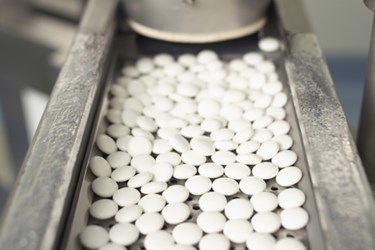Why I'd Rather Take A Pill Made By Continuous Manufacturing

By Ken Congdon

There are several industry drivers motivating drugmakers to begin moving away from traditional batch manufacturing processes and toward a continuous manufacturing model (i.e. where medicines are continuously produced in compact, closed units, with a high degree of automation and fewer manual interventions). For example, there’s the growing need for pharmaceutical companies to not only produce larger volumes of drugs at lower costs, but also simultaneously produce small volumes of very specialized medications. Pulling this off requires a level of agility and flexibility that only continuous manufacturing can deliver. Then there are the operational benefits that pharmaceutical companies can realize by mastering this production technique. Continuous manufacturing has been shown to decrease fluctuations in production; increase product yields; accelerate time to market; and lower staff, equipment, R&D, and other operational costs.
While these benefits are huge for pharma companies, they have little impact on patients. When a patient takes a pill, they have no way of knowing whether it was produced via a continuous manufacturing or traditional batch process. The drug will likely look and work the same at the end of either production cycle. So, the method in which a pill is manufactured shouldn’t really matter much to me as a patient. Right?
Not if you ask Richard Steiner, Business Development Manager at GEA Pharma Systems. According to him, continuous manufacturing also provides several quality advantages that patients should care deeply about. Steiner detailed these benefits in an educational session he delivered at the ISPE/FDA/PQRI Quality Manufacturing Conference earlier this month.
“A continuous manufacturing process delivers built-in quality assurance that ultimately improves the end quality of the product,” he says. “Specifically, it allows drugmakers to perform quality control measures throughout every step of production rather than waiting until a batch is completed. This helps reduce the risk of particle segregation and other factors that negatively impact quality. Because of this, as a patient, I would much rather take a pill made using a continuous manufacturing process than one made using traditional batch manufacturing. The end product is much more likely to be of optimal quality using continuous manufacturing.”
Inside Pharma’s Slow Adoption Of Continuous Manufacturing
Continuous manufacturing is not new. Many other industries adopted this approach years ago, but pharma has been slow to modernize its manufacturing efforts. Many attribute pharma’s reluctance to implement continuous manufacturing to fear that it would interrupt production of high-margin blockbuster drugs.
However, some of the industry’s foremost thought leaders say there’s much more to it than that. For example, during his keynote at the Quality Manufacturing Conference, Juan Andres, Head of Global Technical Operations at Novartis Pharma AG, listed the following factors as contributing to pharma’s slow manufacturing evolution:
- Only 1 in 10 development compounds get to market, increasing the cost and complexity of production planning
- Historically, the only sure thing about the production forecast is that it is wrong
- Unlike other consumer goods, patients cannot wait to receive their prescription medications
- Also, unlike other consumer goods, some of the trade-offs (in terms of quality, speed, and cost) of changing a production process aren’t evident in pharma until it’s too late
However, even taking all of these factors into account, it seems that pharma is finally realizing that it’s time to transform manufacturing paradigms. The patent cliff is upon us. Blockbuster drugs are no longer yielding high profits for most pharmaceutical companies. Moreover, the industry is facing much more quality and cost pressure today than it has in the past. As a result, many of the leading pharmaceutical companies in the world are beginning to adopt continuous manufacturing.
For example, Novartis currently has an operational multi-purpose continuous manufacturing pilot plant at its headquarters in Basel, Switzerland. According to Andres, the facility is about the size of a tennis court and the goal is to continuously process a wide variety of Novartis medications from powder to pill in about eight hours.
J&J and GlaxoSmithKline are two other pharmaceutical giants getting serious about continuous manufacturing. J&J has built a continuous manufacturing facility in Puerto Rico that will manufacture its HIV/AIDS medication Prezista beginning in 2016. The company also aims to manufacture 70% of its highest-volume products using continuous manufacturing methods within the next eight years. Similarly, Glaxo is building a $29 million continuous manufacturing facility in Singapore to make respiratory ingredients beginning in 2016.
While the move toward continuous manufacturing in pharma is occurring, Andres emphasizes that the journey will be a long one. “Transitioning to continuous manufacturing can be accomplished without introducing variability, but it requires a significant investment in technology, planning, and time, as well as the full commitment of executive management,” he says.
That being said, it’s good to see the industry moving in this direction given the efficiency, cost, and quality benefits the process can provide pharma companies and their patients.
